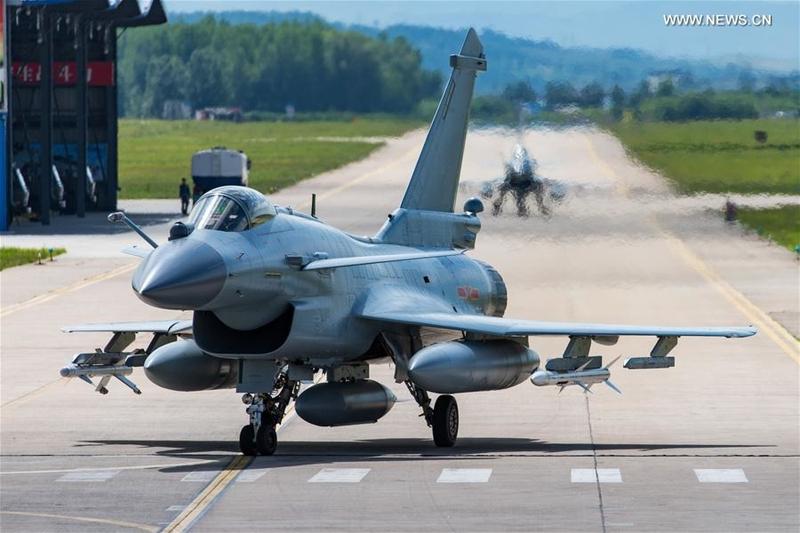The Chengdu J-10CE “Dragon” is a formidable 4.5+ generation multirole combat aircraft developed by the Chengdu Aircraft Industry Group (CAIG), a subsidiary of China’s Aviation Industry Corporation of China (AVIC). As a powerful export variant of the J-10C, the J-10CE represents China’s ambition to offer cutting-edge military technology to its allies. Known for its agility, advanced avionics, and potent weapons systems, the J-10CE has gained significant attention on the global defense market, most notably becoming a key asset for the Pakistan Air Force (PAF).
Development and Evolution of the J-10 Series
The roots of the J-10 series trace back to the 1980s, when China sought to develop a modern fighter that could compete with Western platforms like the General Dynamics F-16 Fighting Falcon. The effort was led by the 611 Institute (Chengdu Aircraft Design Institute), and the first prototype of the J-10 took to the skies in 1998. The initial production variant, the J-10A, entered service with the People’s Liberation Army Air Force (PLAAF) in 2005, marking a significant milestone for China’s indigenous fighter capabilities.
Building on the J-10A, the J-10B introduced substantial upgrades, including a redesigned front fuselage, a diverterless supersonic inlet (DSI), and an X-band passive electronically scanned array (PESA) radar, enhancing both aerodynamic performance and situational awareness. These improvements laid the groundwork for the J-10C, which first flew in December 2013 and entered PLAAF service in 2016.
Key Features of the J-10CE
The J-10CE, designed for export markets, incorporates many of the J-10C’s advanced features while including specific modifications to meet the requirements of international clients. Key features include:
- AESA Radar: The J-10CE is equipped with an Active Electronically Scanned Array (AESA) radar, offering superior target tracking, electronic warfare capabilities, and multi-target engagement.
- Helmet-Mounted Display and Sight (HMD/S): This system allows pilots to engage targets by merely looking at them, significantly enhancing close-combat effectiveness.
- Infrared Search and Track (IRST): Provides passive long-range target detection without emitting radar signals, reducing the likelihood of detection.
- Electronic Countermeasures (ECM): Advanced ECM systems provide robust protection against incoming missiles and electronic attacks, enhancing survivability.
- Diverterless Supersonic Inlet (DSI): Improves stealth characteristics and engine efficiency by reducing the radar cross-section and minimizing drag.
- Modern Avionics: Integrated glass cockpit with multifunction displays, digital flight control, and state-of-the-art mission systems.
Weapons Compatibility and Firepower
One of the J-10CE’s standout features is its compatibility with advanced Chinese weaponry, making it a formidable opponent in both air-to-air and air-to-ground combat. Notable armament options include:
- PL-15 Long-Range Air-to-Air Missile (LRAAM): Capable of engaging targets beyond visual range, the PL-15 is a key component of China’s air dominance strategy.
- PL-10 High-Off-Boresight (HOBS) Air-to-Air Missile: Provides exceptional dogfighting capability with high maneuverability and wide engagement angles.
- Precision-Guided Munitions (PGMs): Includes a range of guided bombs and air-to-surface missiles for precision strike missions.
Specifications of the J-10CE
- Length: 16.9 m
- Wingspan: 9.8 m
- Height: 5.7 m
- Maximum Speed: Mach 1.8 (approx. 2,222 km/h)
- Combat Radius: 1,240 km (2,600 km with in-flight refueling)
- Ferry Range: 2,950 km
- Engine: WS-10B afterburning turbofan
- G-Load: -3 to +9 g
Pakistan’s Acquisition of the J-10CE
Pakistan’s decision to acquire the J-10CE was driven by strategic and operational considerations. Initially exploring the possibility of acquiring Lockheed Martin F-16C/D Block 52s, the Pakistan Air Force (PAF) turned to the J-10CE after the U.S. Congress blocked Foreign Military Financing (FMF) for the deal. The J-10CE offered a competitive alternative with its cutting-edge radar, advanced avionics, and potent weapons suite, making it an ideal match for Pakistan’s evolving air defense needs.
In March 2022, the PAF officially inducted the first batch of 20 J-10CE fighters into its No. 15 Squadron, known as the “Cobras.” The total contract, reportedly valued at $1.525 billion, included not just the aircraft, but also 10 spare WS-10B engines and 240 PL-15E LRAAMs, underscoring the scale of Pakistan’s commitment to modernizing its air force.
Strategic Impact and Future Prospects
With the J-10CE now part of its arsenal, the PAF has significantly enhanced its capability for long-range air-to-air engagements and precision strikes, providing a credible counter to regional adversaries. The aircraft’s integration into the PAF’s operational framework complements its existing fleet of F-16s and JF-17 Thunders, creating a multi-layered defense strategy.
Looking ahead, it remains unclear if Pakistan will expand its J-10CE fleet, though historical procurement patterns suggest a long-term goal of acquiring at least 80 units to fully leverage the platform’s potential.
Conclusion
The Chengdu J-10CE Dragon stands as a powerful symbol of China’s growing influence in the global arms market. Its combination of advanced avionics, powerful weapons systems, and competitive pricing make it a compelling choice for nations seeking to modernize their air forces without relying on Western technology. As the PAF and other potential buyers evaluate their long-term airpower needs, the J-10CE will likely play a critical role in shaping the future of aerial combat in the 21st century.



